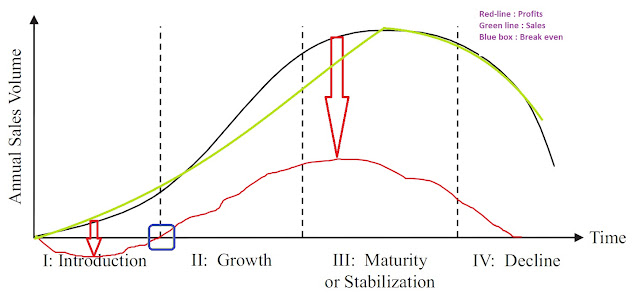New Product Development (NPD) chapter starts with the definition of acquisition which means when a company acquires some other company. For example, Microsoft acquired Nokia, but the question is what is the parameter of acquisition. The only parameter is one 51% of the shares are acquired by a company plus their assets.
New product development is a process of developing or manufacturing a new product which is introduced first time in the market or improving an existing product or put some sort of modification in it. Jumping from Samsung Galaxy s8 to s9 is also a new product development since it’s a modified product than prior.
Before continuing further, one should know about innovation. 1st type of innovation is known as Radical innovation where the whole market structure is changed by introducing a phenomenal product. The best example is the introduction of I-Phone and Tesla cars. The second type of innovation is Incremental Innovation where you innovate step by step by improving or modifying a particular product line.
The elongated NPD process comprises 8 steps from Idea generation till the final Commercialization of a product.
The first step is Idea generation where you generate different types of idea on the bases of filling a market gap. This can be done through brainstorming techniques in different departments of an organization. Two types of idea generation are internal (within the organization) or external (looking at the competitor and fulfilling customers’ needs and wants).
The second process Is known as Idea screening where you use a technique of funneling effect. You have multiple ideas and you screen them on the basis of how close they are close to the reality and how easily they can be implemented.
Concept testing is basically how the end product is going to look, in short, how customers will perceive the product we have made. So what you have screened down is now in a stage of feasibility test.
Marketing strategy is where we develop our strategy, in short, we are going to focus on STP. What segment we will target, what is our potential target market and how we are going to position our product in customer’s mind. Secondly, the major focus will be on what will be our value proposition and why the customer should buy our product.
Business analysis is basically we do trend projection and forecast our sales. We have a budget in our hand and we develop a timeline of how much money we should spend in each month till the product is placed in the market.
Now we are converting an intangible idea into a tangible product. This concept is known as product development where we develop few of the prototypes and see which one looks the best. This development stage is executed by Research and Development department (R&D).
Then we move towards Test marketing stage where we test our product response in the actual ground setting. It consists of three strategies 1) Standard test (a strategy where the product is placed in different cities and stores to see the sales) 2) Controlled test marketing (where few of the stores are selected to place your product and after when the customer purchase your newly developed product they interview the customer about the product and their experience). Simulated or laboratory test marketing (a strategy where you choose the desired sample of customers and then you test them in a controlled environment, for instances your company own employees can be the sample). Each test marketing has their own flaws and positive side.
Lastly Commercialization a process where you planned out the marketing mix, where to launch and at what time we should launch.
The strategies of NPD are as follows: 1) Consumer-centric NPD (where the main focus is to develop a product by the needs of the customers). 2) Sequential NPD (one department completes one process and then forward it the other department). Team base (more productive, where different teams of different department work together as a more innovative culture).
Lastly, we are going to discuss PLC (product lifecycle) Where we study the lifecycle of a new product. Since you can the diagram the red line is the profits and the green line is the sales. Initially, whenever the product is introduced for the first time it will always go in loss because you haven’t recovered your initial investment or cost. So red line is below the mark. After that when red line touches the black line that’s where the company touches the break even. At maturity you can see a substantial difference between profits and sales since profit and sales cannot meet each other because you have to eliminate your daily expense out from the sales you have done, that’s why there is a gap between both of them.

For many marketers, a very big question often comes down to Facebook Ads versus Google Ads. After all, these are the two leading platforms for online pay-per-click (PPC) advertising. However, it can actually be beneficial to include both in your marketing strategy. Both platforms have unique strengths and weaknesses. The key is to understand which platform exceeds in which areas. Learn more here: Facebook Ads versus Google Ads: Which Has the Better ROI?
ReplyDelete